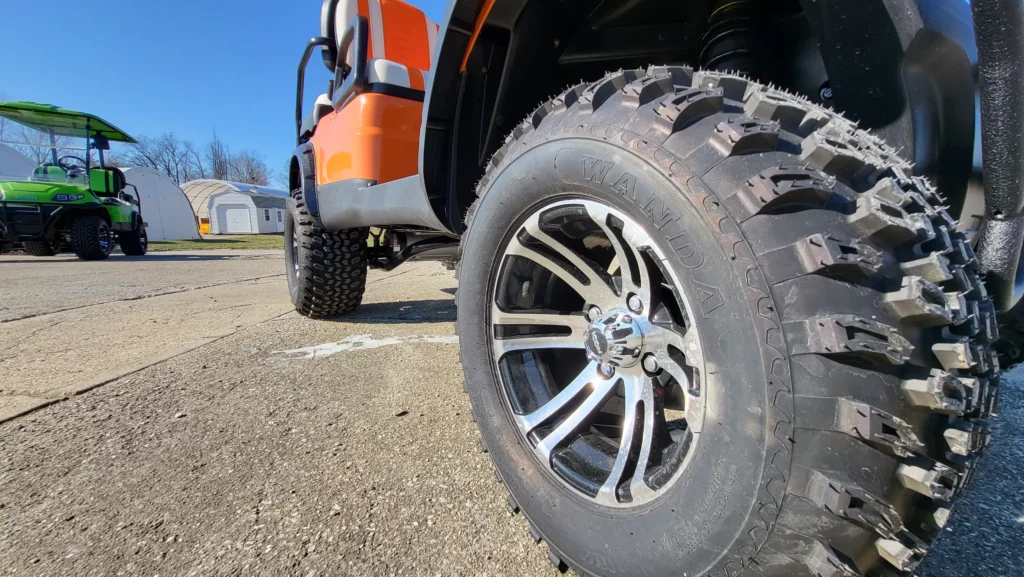Many golf cart owners are unsure how to test a golf cart solenoid. This leads to performance problems and delays with their golf carts. Knowing what a solenoid is and how to test it is necessary for maintenance. If you are unfamiliar, don’t worry, we’ve got you covered.
One of the most important components of your electric golf cart is the solenoid, which helps transfer power from the battery to various parts of the vehicle – so testing it regularly can help ensure you get maximum performance out of your ride. But how do you test a golf cart solenoid? In this post, we cover everything you need to know about diagnosing and testing your golf cart’s solenoids in order to keep things running smoothly! Let’s go over how to test a golf cart solenoid.

What is a Golf Cart Solenoid?
You will find the solenoid located at the top of the starter in the engine. It’s responsible for transferring power from the battery to the rest of the vehicle via an electric charge that creates a magnetic field. They range in size depending on the vehicle they’re found in but check out the picture below to know what they generally look like.
Gather necessary tools, such as a multimeter, screwdriver, and wire cutters
Starting a new project can be exciting – whether you’re fixing something that needs a little TLC or creating something from scratch. But before you dive in headfirst, it’s important to gather the necessary tools. For electrical projects, a multimeter is a must-have for measuring voltage and resistance. A screwdriver, both flat-head and phillips, is needed to loosen and tighten screws. And of course, wire cutters come in handy for snipping and stripping wires. Having these tools at the ready will make any project go more smoothly – after all, you don’t want to be stuck midway through without the proper equipment!

Symptoms of a Bad Solenoid
A bad Solenoid can cause multiple issues. These issues can be used to diagnose the solenoid as the problem part. If you are having trouble with the starter, you may notice the starter continuing to run after the engine has been powered down. Solenoids can overheat and break down internally, which would cause them to fail to engage entirely. If you don’t hear a clicking sound from the solenoid, it is likely faulty. This could signal a bad connection, battery or coil.
How to Test a Golf Cart Solenoid
Testing a golf cart solenoid is a simple process. Gather your tools, a voltmeter or multimeter a ½” wrench. The key should be in the off position and transmission set to neutral. Make sure no wires are connected to the large terminals before you start. Disconnect them and cover them with electrical tape. Set your multimeter to ohms, then place a probe on each large terminal. Turn the key on, switch the transmission into the forward position, and press on the accelerator. You are listening for a click from the solenoid.
- If you hear a click, get an ohm measurement for the resistance between the larger terminals. If the reading is above 0.4, the solenoid needs to be replaced.
- If you do NOT hear a click, set your multimeter to DC volts and test. Please your probes on the small terminals. Again, press the accelerator. If the voltmeter shows full voltage to the battery without a click, the solenoid needs to be replaced. If the voltage shows 0, other issues are present.

Replacing a Golf Cart Solenoid
When it comes to replacing a solenoid, this is typically a straightforward process. Find the solenoid, disconnect its wires, and remove it. Take your new solenoid, plug it in, and secure it in place. Never force the hardware together or apart as the connectors are commonly made of plastic.
Maintaining Your Golf Cart Solenoid
Regular maintenance for a solenoid is also a simple process, and quite effective in extending the lifespan. Add this to your weekly routine of golf cart inspections and cleanings, and you will benefit greatly as a golf cart owner. Always check the wires for corrosion, and make sure they are snug. Clean the solenoid itself and the surrounding area. Dust is not your friend with electrical parts. Periodically test the voltage into the solenoid to confirm it is getting the appropriate voltage and therefore optimal performance.
Conclusion
If you want to ensure a smooth operation and avoid frustrating breakdowns, you need to know how to test a golf cart solenoid. Learning the symptoms of a failed solenoid will help diagnose when problems do occur. If your solenoid fails, replacing it is quite easy, just be sure to take it step by step. Keep a regular inspection and maintenance schedule, regularly clean all components of your golf cart and you will be good to go!













